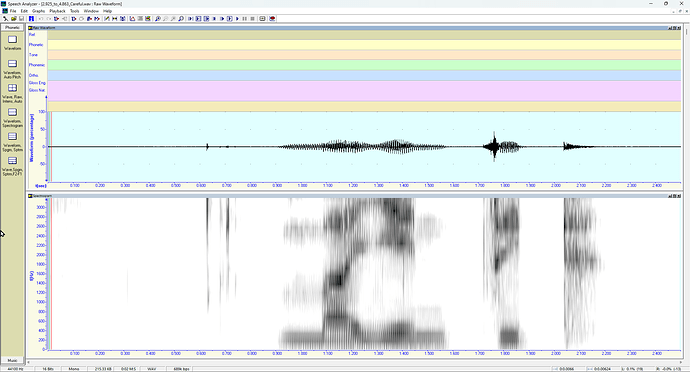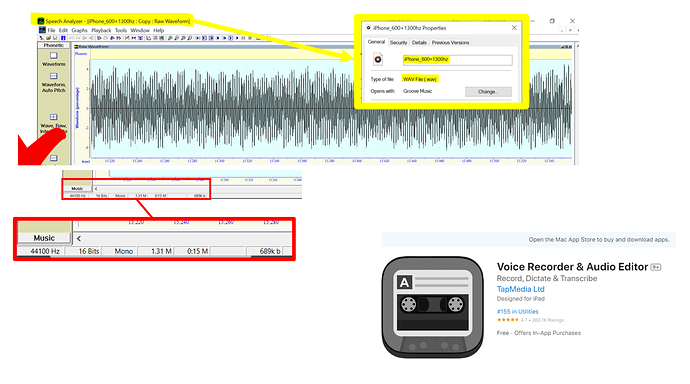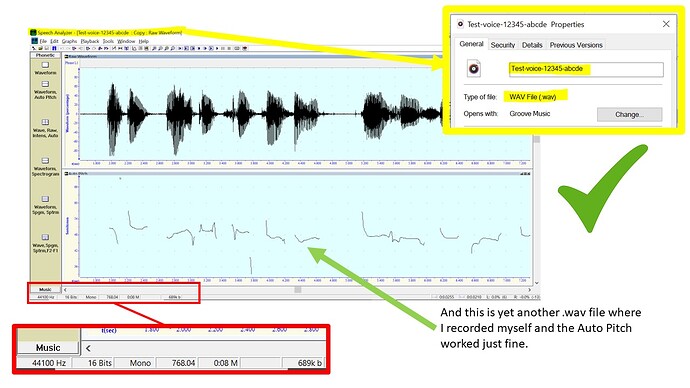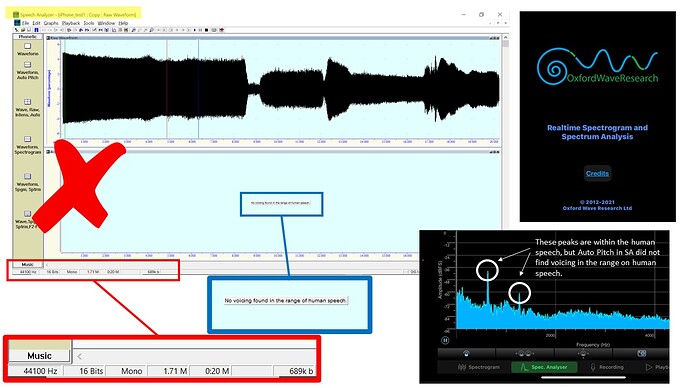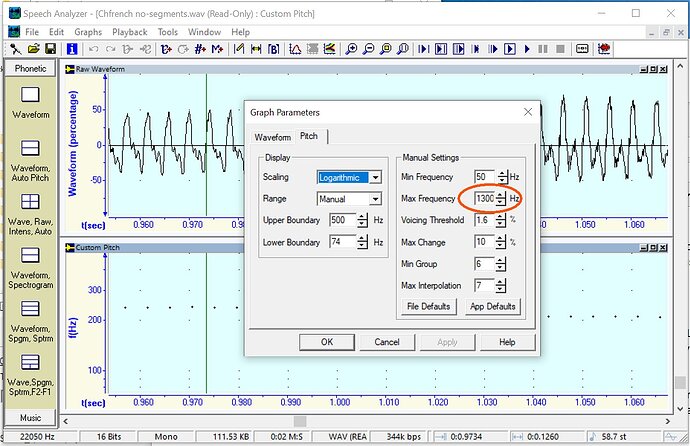Hi, for the last two days I have been playing with the features in Speech Analyzer to become familiar with them. In particular, I’m trying to plot the raw pitch for some PC-recorded audio files, but I’m getting the following message every time I select the command to plot raw pitch:
“No voicing found in the range of human speech.”
I have encountered no problems to plot spectrogram of these PC-recorded .wav files, but the formants are not being plotted despite I have selected the option in the right-click Parameters… window.
I have been able to plot Intensity as well, but not the rest of the wide range of graph options available in Speech Analyzer.
I could be missing something but after reviewing what I have done and still being stuck at it, I decided to ask for help.
Before starting this new thread, I have conducted the following troubleshooting:
- Downloaded and checked the Student Manual looking for a troubleshooting guide. (I found no reference to this problem)
- Typed “No voicing found in the range of human speech.” in Google. (I found no reference to this problem).
- Searched among the existing inquires in this online community. (I found no reference to this problem).
- Tested the raw pitch plot function with three different PC-recorded audio files. (UNSUCCESSFUL).
- Tested the raw pitch plot function with two different iPhone-recorded audio files. (UNSUCCESSFUL).
- Tested the raw pitch plot function using three of the example audio files that come with the installation of Speech Analyzer. (SUCCESSFUL).
In summary, the option to plot raw pitch and formant (and few other graphs) does not work on any .wav file other than the examples .wav files that are part of Speech Analyzer installation.
Could you think of any reason why I can’t plot raw pitch and formants in the files I’m recording and opening with Speech Analyzer?
Thank you for any guidance you could provide.
Jorge

